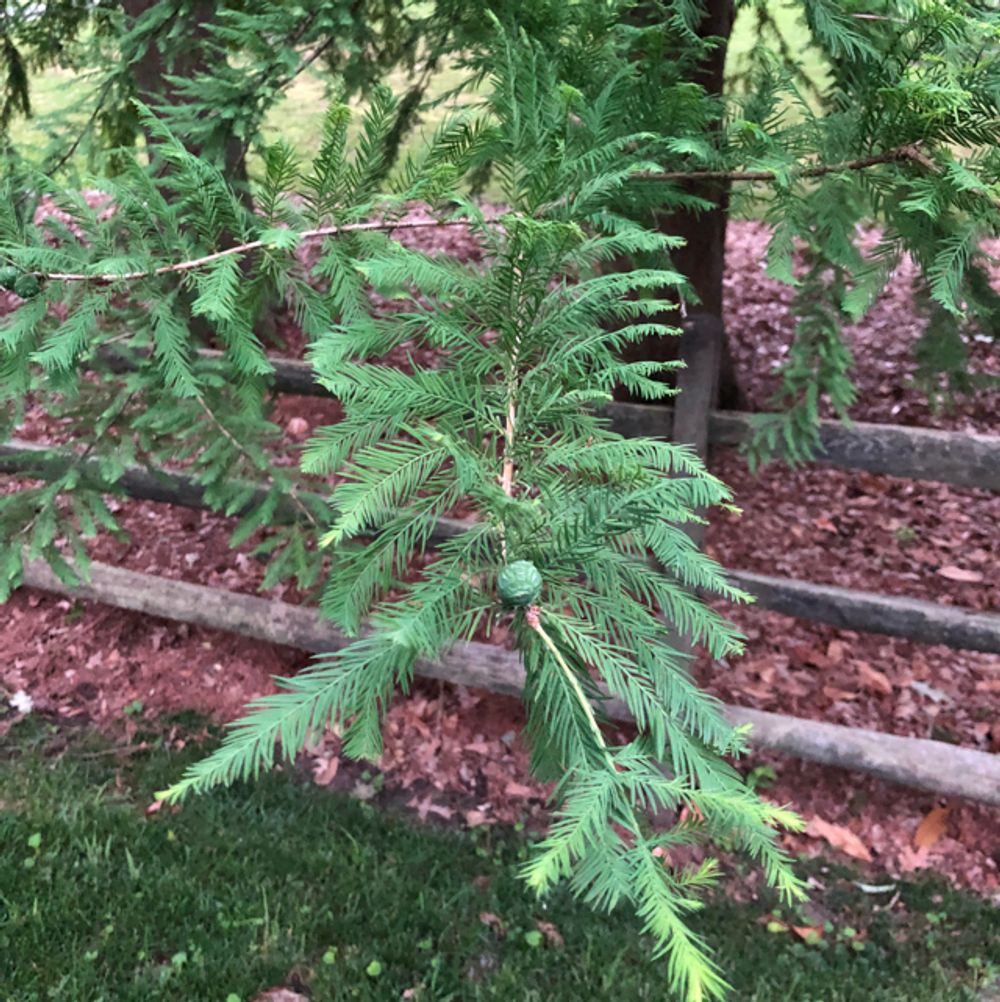Pond cypress
(Taxodium distichum imbricarium)

Description
Taxodium distichum imbricarium, commonly known as the "pond cypress," is a deciduous conifer tree that belongs to the family Cupressaceae. It is a subspecies of the Taxodium distichum species and is native to the southeastern United States, including areas such as the Mississippi River valley, the Gulf Coast, and the Atlantic Coastal Plain. Taxonomy and Nomenclature: The scientific name of the pond cypress, Taxodium distichum imbricarium, was first described by the French botanist, André Michaux, in 1803. The species name, distichum, refers to the arrangement of its leaves in two rows, while the subspecies name, imbricarium, means "overlapping" and refers to the way in which its leaves overlap one another. The common name, "pond cypress," refers to the deciduous nature of the tree, as it loses its leaves in the fall and appears "bald." Description: The pond cypress is a large tree that can grow up to 120 feet in height and 6 feet in diameter. It is typically found in wetland areas such as swamps, bayous, and floodplains, where it plays an important ecological role in stabilizing soil, regulating water flow, and providing habitat for wildlife. The tree is characterized by its conical shape, with a straight trunk that is often buttressed at the base. The bark of the pond cypress is gray-brown and fibrous, with deep fissures and ridges. The leaves of the pond cypress are deciduous and needle-like, with a soft texture and a bright green color. They are arranged in two rows along slender twigs, giving the tree a feathery appearance. The leaves are typically 0.2 to 0.4 inches long and 0.04 to 0.08 inches wide, and they overlap one another in an imbricate pattern. In the fall, the leaves turn a beautiful golden-brown color before falling to the ground. The pond cypress is a monoecious plant, meaning that it has separate male and female reproductive structures on the same tree. The male cones are small and yellow, while the female cones are larger and greenish-brown. The cones mature in the fall, and the female cones release small, winged seeds that are dispersed by the wind. Cultivation: The pond cypress is a popular tree for cultivation in gardens and parks, as well as in commercial forestry. It is known for its adaptability to a wide range of soil types and growing conditions, and it is relatively easy to propagate from seed or cuttings. The tree prefers moist, well-drained soils and full sun to partial shade. One of the most unique features of the pond cypress is its ability to grow in standing water. In fact, it is often found in swamps and other wetland areas, where it can tolerate flooding for extended periods of time. This adaptation makes it an important tree for wetland restoration and conservation efforts. Uses: The pond cypress has a long history of use by humans, dating back to Native American cultures that used its wood for a variety of purposes, including building canoes, houses, and other structures. The wood is highly durable and resistant to decay, making it a popular choice for outdoor construction projects. Today, the pond cypress is still used for a variety of purposes, including lumber, pulpwood, and ornamental plantings. Its distinctive shape and beautiful fall color make it a popular tree for landscaping and street plantings, while its wood is highly valued for its strength and durability. Conservation: The conservation status of Taxodium distichum imbricarium is currently listed as "Least Concern" by the International Union for Conservation of Nature (IUCN). This means that the subspecies is not considered to be at risk of extinction at the global level. However, this does not mean that the pond cypress is not facing threats to its survival. One of the biggest threats to the species is habitat loss due to wetland conversion for agriculture, urbanization, and forestry. In addition, the pond cypress is vulnerable to logging and overharvesting, particularly in areas where it is commercially valuable. Conservation efforts are underway to protect and preserve pond cypress populations, particularly in areas where they are considered to be at risk. This includes the establishment of protected areas and wetland restoration projects. In addition, there is ongoing research to better understand the ecology and biology of the species, which can inform conservation strategies and management practices.
Taxonomic tree:







